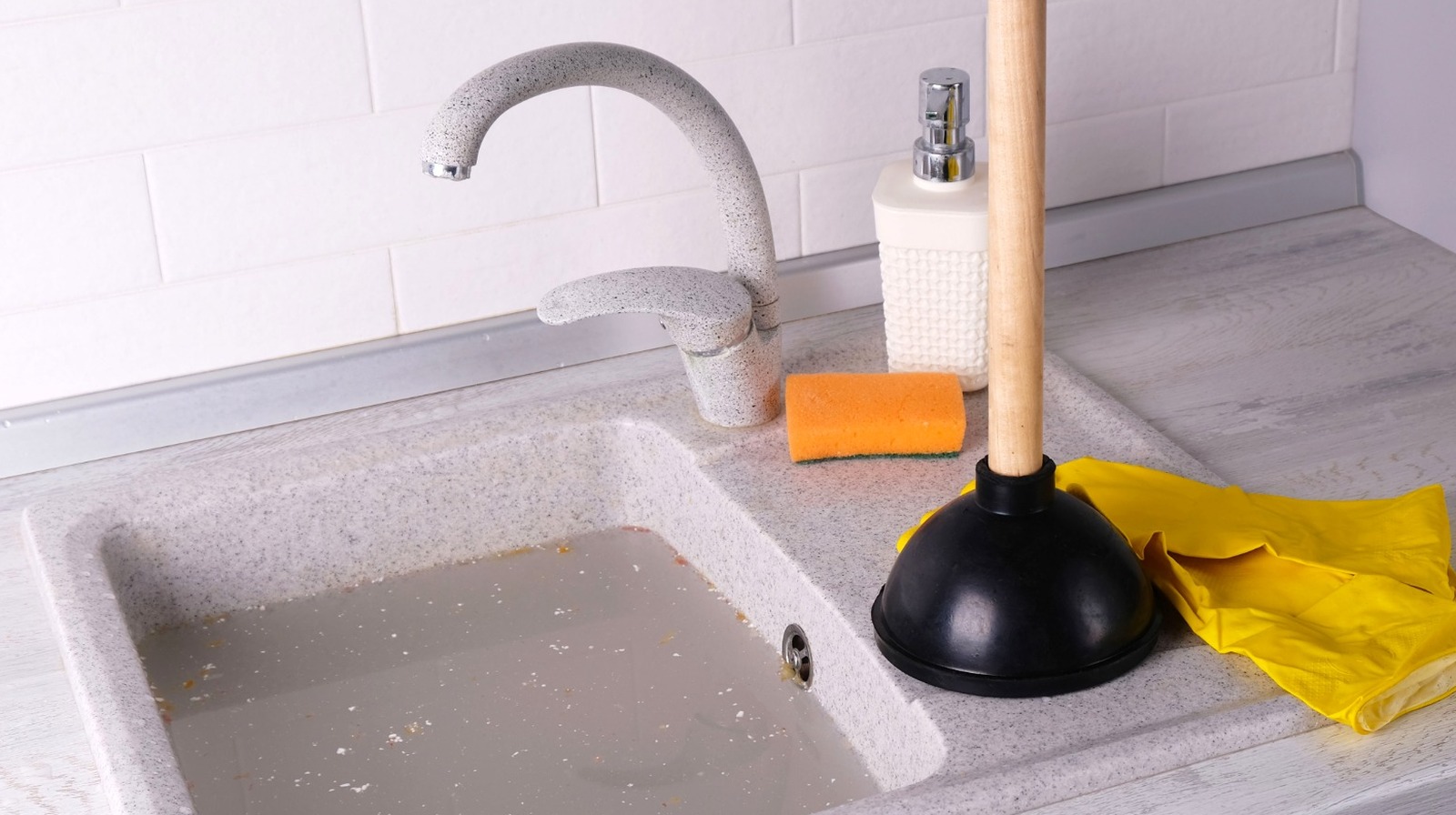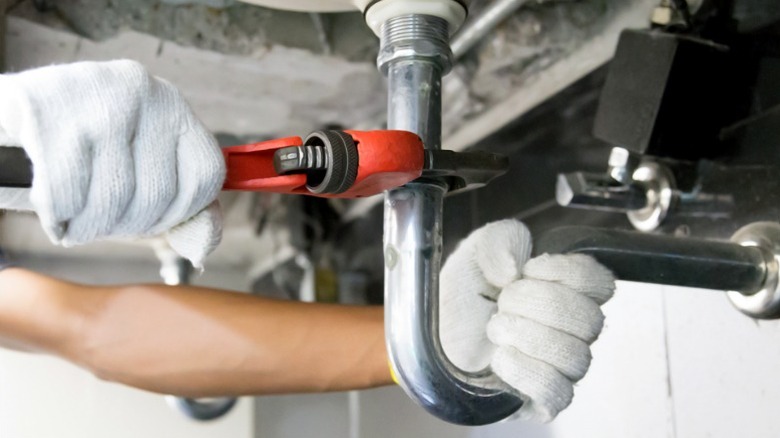A clogged kitchen sink is a high-priority maintenance issue. Left unattended, the smell of grime and rotten food permeates the kitchen and leaves you without the area where you strain water, wash your hands, and clean the dishes. Depending on the clog at hand, there’s often a quick fix to get the sink back to normal and get you back to cooking the recipes you love.
Most standard kitchen sink clogs come from food scraps and everyday wear and tear. Minor clogs can be resolved with the baking soda-and-vinegar hack or by pouring boiling water down the drain. Liquid solutions work to dissolve grease and grime but they can’t fix bigger problems, such as stuck food scraps. Serious sink buildup might require a plunger or other tool. Before trying out any of these hacks, get rid of any excess water pooled in the sink. Wait for it to drain or empty it manually by pouring the water into the bathtub or other sink (straining out any food chunks). You can start troubleshooting once the sink is empty. If any of these quick fixes don’t work, a professional plumber can help set your kitchen sink right.
Unclogging serious sink buildup
Most standard kitchen sink clogs can be resolved with a cup plunger (the one Mario carries around for his plumbing jobs). Cup plungers are meant for unclogging sinks, which is why they’re smaller than the flange plungers used for toilets. Fill your sink with a couple inches of water, stick the plunger over the drain, and pump it up and down for about 20 seconds. The suction it creates moves stuck debris, letting the water drain again.
If the plunger method doesn’t work, there might be a larger issue at hand. Check under the kitchen sink and inspect the area for leakage. Clogged kitchen sinks leak when there’s too much pressure on the pipes, and it’s possible your P-trap – the part of the sink that prevents debris from messing up deeper pipes in the plumbing system — needs to be cleaned or replaced. You can unclog the P-trap by unscrewing it, clearing out the debris, and reattaching it once more. Heads up: It’s really nasty, so wear gloves and have a bucket ready to catch the gunk.
Extracting foreign objects from the sink’s drain
When facing a home repair issue, it can be easy to overlook the little things. Take a flashlight and peer down the drain of your kitchen sink to check for any foreign objects. Silverware, bottle caps, wing bones, and more can slip out of sight and become lodged in the drain. Absolutely do not stick your hand down there to grab anything if your sink has a garbage disposal. There are sharp metal pieces that can cut your fingers, and getting stitches at the hospital is more of a hassle than calling the plumber.
Unless you’ve got some high-end silverware, there’s a good chance your dining utensils are made of stainless steel. True silver isn’t magnetic, but stainless steel is, so a magnetic screwdriver can help you finagle out a steel spoon, bottle cap, or other small item. For non-magnetic objects, reach for a pair of tweezers or long-nose pliers. If anything is too deep to reach, check the P-trap. Pro tip: Use ketchup to polish any grimy silverware after you remove it from the sink and clean it.







